Walnut Creek Bio Blitz: Shining Light on Iowa's Water Systems
posted
by Guest Blogger on Thursday, August 4, 2022
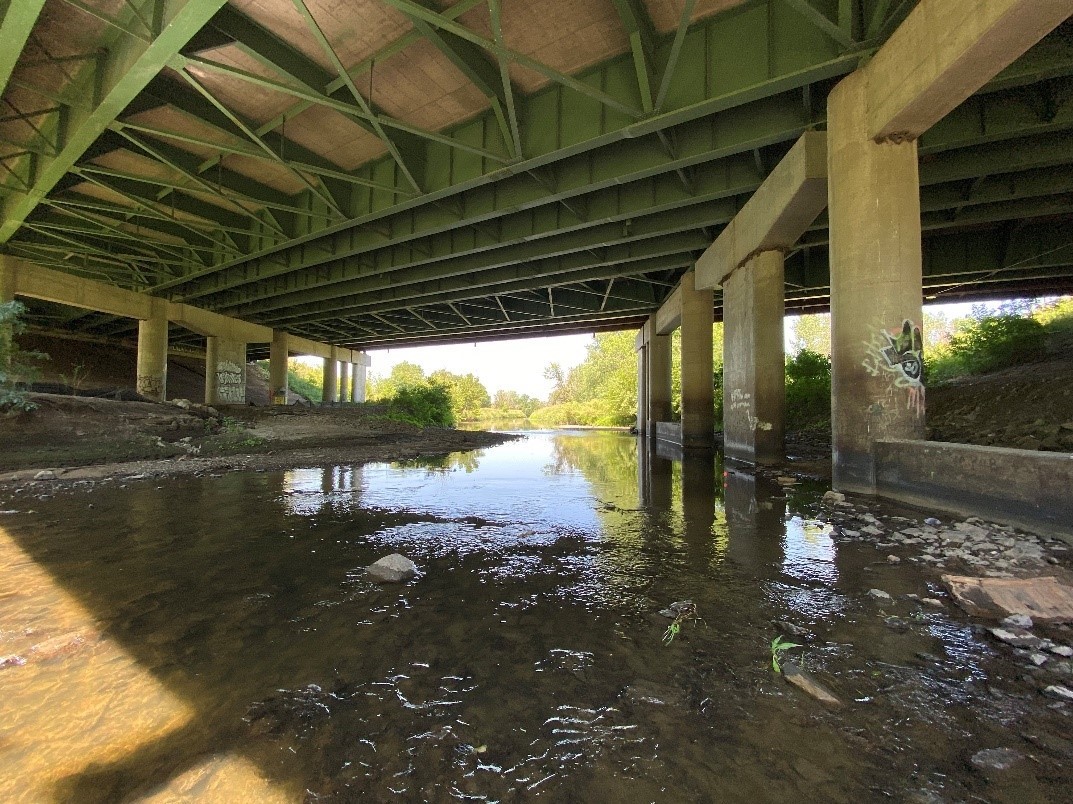 As a lifelong Iowan, I never thought of Iowa as a water state. In my mind, that place is reserved for northern places like Minnesota and Wisconsin, both well known for their water recreation and access to the Great Lakes. New England ports, the Gulf shore, and West coast surfing are also things I envision when I think of a water state. I do not envision Iowa.
As a lifelong Iowan, I never thought of Iowa as a water state. In my mind, that place is reserved for northern places like Minnesota and Wisconsin, both well known for their water recreation and access to the Great Lakes. New England ports, the Gulf shore, and West coast surfing are also things I envision when I think of a water state. I do not envision Iowa.
However, that could not be further from the truth.
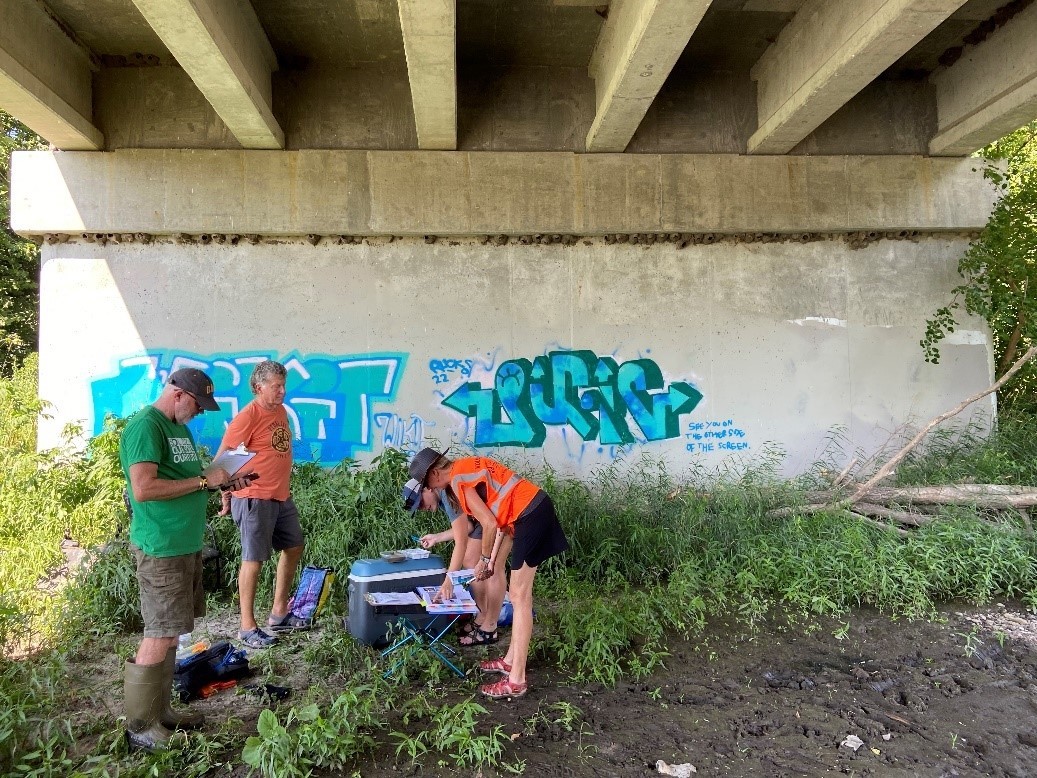
Iowa has a vast interconnected system of waterways. We have dozens of lakes and beaches stretching across the state. Water is vital for agriculture in Iowa. So much of our state’s culture and identity revolves around water.
Simple, everyday actions relating to water are more complicated than we often recognize. We don’t always think about the stream below the bridge we cross to get to work, or about how water gets to our faucet. We don’t always consider how street drainage takes the excess water away from our houses and lawns.
Recently I had the opportunity to inspect a waterway up close. Polk County Conservation conducts water quality testing to monitor the status of 70 sites on rivers and streams across the county. Volunteers are crucial in the ability to accomplish this at such a magnitude. Testing is essential in determining the health of a waterway, and monitoring changes and potential pollution from upstream.
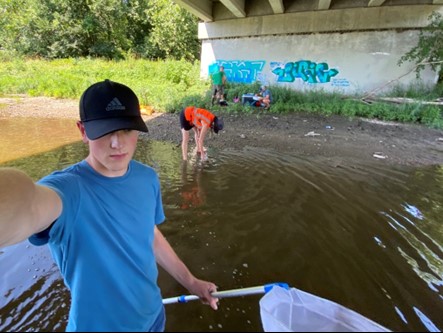 On a hot July afternoon, five of us trudged down under an I-235 bridge spanning across Walnut Creek in Des Moines. We were led by Steve Falck, Senior Policy Advocate at the Environmental Law & Policy Center, a longtime IEC Member Organization. Other members of our team included Alicia Vasto, Associate Water Program Director at IEC, and Christine Curry and Curtis Cokeley from the Izaak Walton League Des Moines Chapter.
On a hot July afternoon, five of us trudged down under an I-235 bridge spanning across Walnut Creek in Des Moines. We were led by Steve Falck, Senior Policy Advocate at the Environmental Law & Policy Center, a longtime IEC Member Organization. Other members of our team included Alicia Vasto, Associate Water Program Director at IEC, and Christine Curry and Curtis Cokeley from the Izaak Walton League Des Moines Chapter.
Steve conducts water testing twice every month at two locations on Walnut Creek in Des Moines. He tests for various parameters, such as pH, nitrate, and chloride levels. Once yearly, the sites also undergo a biological and habitat assessment. Today was that day.
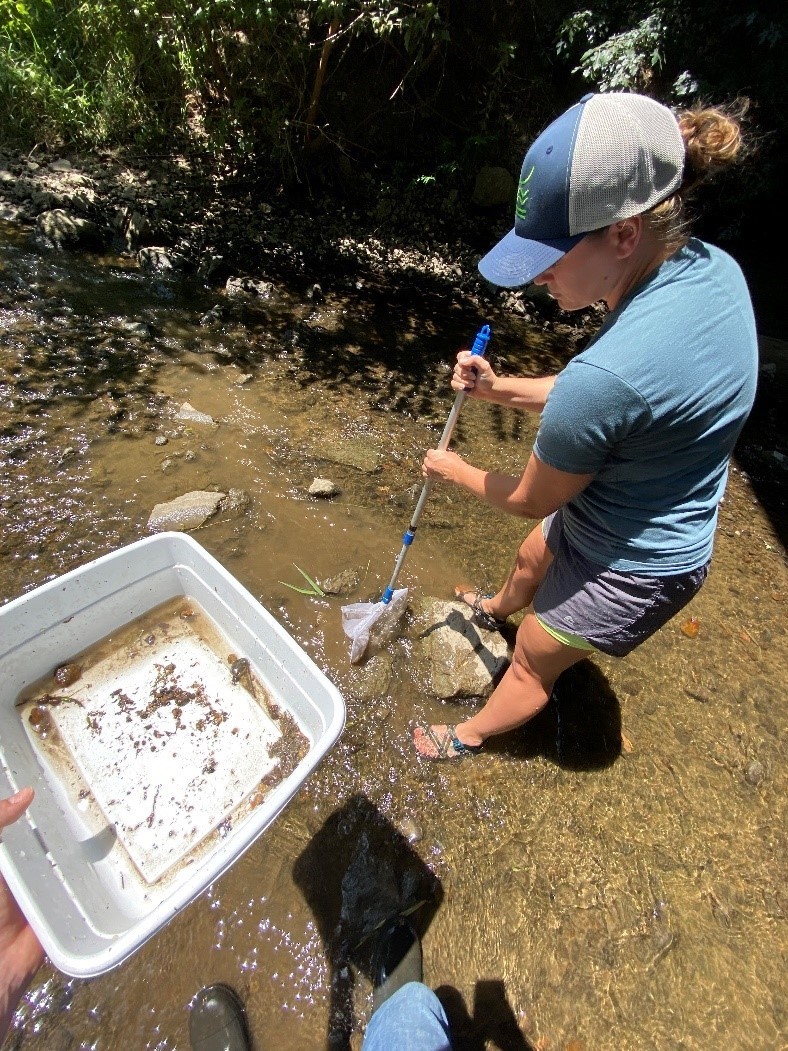
With my rubber boots, I waded into the stream with Alicia. We took turns stirring up the creek bed with a net to catch any aquatic macroinvertebrates (flies, worms, snails, crayfish, etc.). We would scour the underside of rocks and pluck them off. Everything we found would be placed in a tub to be identified and counted later.
After about 45 minutes of collection, we sifted through the tub, moving each organism into its own slot in an ice cube tray. We used booklets to help identify the creatures and counted each one. After finishing up, we moved on to a second site a few miles downstream, where we repeated the process.
The day provided an exceptional reminder of the complexity of our water systems. It was amazing to see how much life can exist in such a small space. In the first location, we could find several organisms under nearly every rock. They were flourishing and interacting with each other.
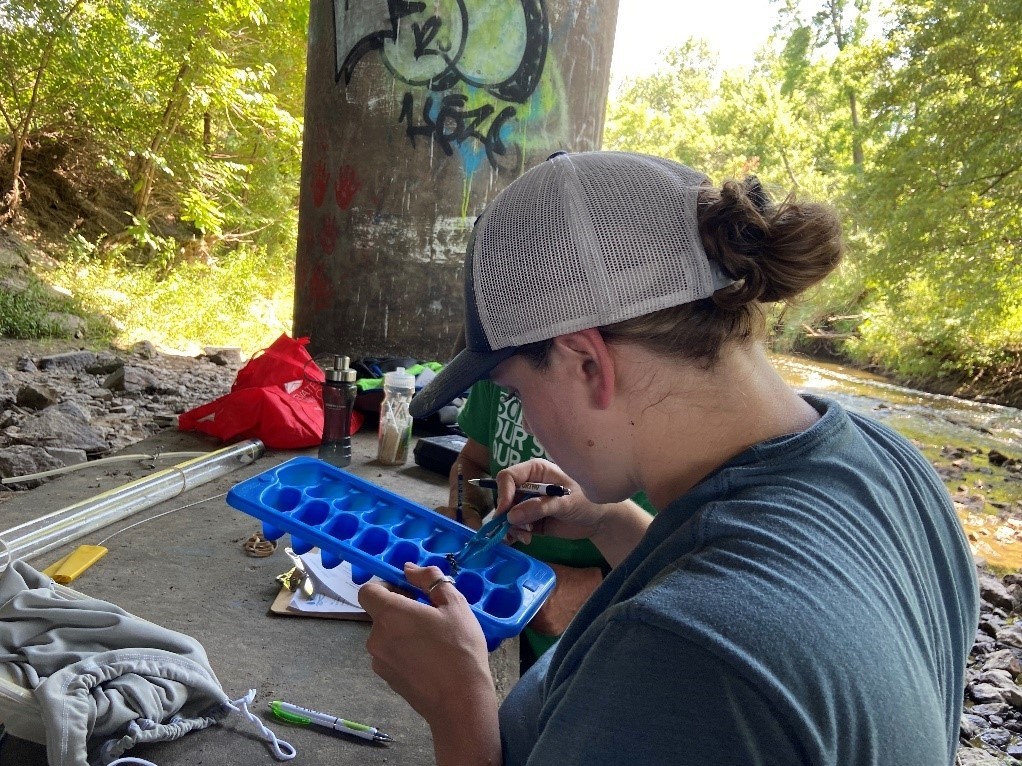
However, it was still apparent that humans negatively impact the creek. At the first site, we were cautious of the various pieces of rusted metal, including an entire tailgate from a pickup. At the second site, Steve dragged trash bags full of rotting grass clippings out of the creek.
Maybe it’s not weird that I don’t think of Iowa as a water state. After all, we drained prairie potholes, introduced drainage tile, and straightened rivers, all to dry up the state for agriculture. That push for agriculture has endangered our waterways.
Actions we take here can affect our own water, but also have far-reaching effects, as distantly as the Gulf of Mexico. In many ways, we’re not considerate of our water, and that needs to change.
Life is busy. Not every single person has to dedicate all of their free time or their career to water advocacy. I won’t solve major water quality issues by counting the number of snails in a 50-meter section of stream one afternoon. But it helps. It takes a little from each of us to better our water, and consequently our state and country.
We need to think of Iowa as a water state, we need to consider the impact our actions have downstream, and we must continue to learn more and tell others about the state of our water.
About the Author
 McCade joined IEC for the summer of 2022 as the communications intern. He grew up on a small family farm in central Iowa and has always been interested in the environment. He and his dad planted thousands of trees on their land, hoping to renew habitat and do a small part to offset carbon emissions. He is currently attending Drake University, majoring in multimedia journalism with a minor in economics.
McCade joined IEC for the summer of 2022 as the communications intern. He grew up on a small family farm in central Iowa and has always been interested in the environment. He and his dad planted thousands of trees on their land, hoping to renew habitat and do a small part to offset carbon emissions. He is currently attending Drake University, majoring in multimedia journalism with a minor in economics.
- clean water
- water quality